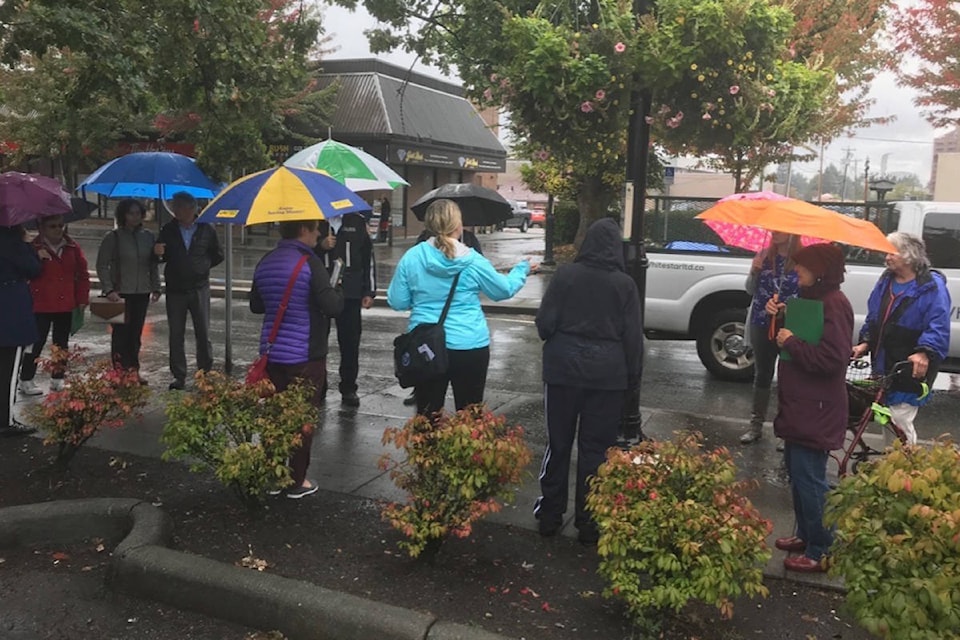A series of Walkability Studies have been conducted in downtown Maple Ridge to evaluate whether the community is dementia-friendly.
The study was done by the Maple Ridge-Pitt Meadows-Katzie Seniors Network sub-committee, the Dementia-friendly Community Task Group, and is being funded by the City of Maple Ridge.
Two walks took place, one in September and the most recent one on Nov. 5.
The goal of the Walkability Study is to look at the built environment including streetscapes and signage and local facilities including recreation centres, library and city hall to ensure they are welcoming to people of all abilities.
Participants looked at things like signage, unobstructed sidewalks, clearly marked accessible washrooms and easy to use street furniture.
“Dementia-friendly communities are defined by their social characteristics and physical characteristics,” explained Heather Treleaven, co-ordinator of the Maple Ridge, Pitt Meadows, Katzie, Seniors Network.
“The way these features are constructed can have a positive or negative impact on independence and safety,” added Treleaven.
The study is part of its larger, dementia-friendly community project with the goal of improving the inclusion of people with dementia and reducing the stigma of the disease.
This project is the work of the Maple Ridge-Pitt Meadows-Katzie Seniors Network in conjunction with the Alzheimer Society of B.C., City of Maple Ridge and Fraser Health.
“It’s to start a conversation, really, with city staff and representatives of the Seniors Network about considering accessibility and how people living with dementia might be impacted by the built environment,” said Treleaven.
Participants on both walks were able to identify areas where sidewalks could be improved, crosswalks that could be better marked and the need for more accessible washrooms.
“For example, if you have a couple and one of the partners has dementia and they can’t go into the men’s and they can’t go into the lady’s, some sort of gender-neutral or accessible washroom in public places [is needed],” said Treleaven.
“Otherwise, you send your spouse in there and they might not come back. If there’s a backdoor, they go out that way and you might lose them,” she added.
Treleaven said the group also noted that Maple Ridge has a fair amount of street furniture, in terms of benches, around the downtown core, especially 224 Street, “which is excellent.”
There are only a couple of places where the group thought new furniture could be added, including 226th Street.
“For example, from the bus loop down to the Lougheed Highway, there aren’t any on that street,” Treleaven said.
“And of course the people getting off the bus, that’s the way they’ll go. So maybe it hadn’t been considered before.”
Around 10 to 12 participants took part in each walk, including some with dementia, as well as with physical disabilities and vision limitations.
The groups were kept small to encourage one-on-one conversation.
Treleaven is confident that the study has opened up a conversation regarding future development in the city and working together.
“So that future development will give more consideration to age-friendly and dementia-friendly features when they develop new areas or if anything is replaced or improved.”
